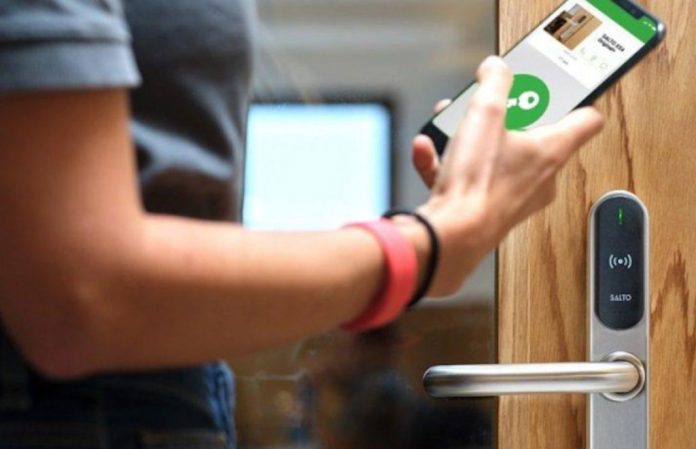When you’re choosing smart locks for SME or residential applications, bear in mind these 5 key features.
But before we get onto those features, a word on build quality. While some locks installed in internal applications will not be exposed to the elements, a lock with a poor build, including the use of mismatched metals, may corrode rapidly if used outside near the coast, or in full sunlight. Pay special attention to the quality of the keeper and door surrounds, as well as the lock – a secure lock is part of a system, not a stand alone device.
Communications
Wireless communication is a key feature of smart lock systems – smart locks commonly work with Bluetooth and Wi-Fi networks. This improves lock-to-system signal transfer, and the wireless ecosystem might include smartphones, home automation controllers, and alarm systems.
Wi-Fi connections are ideal for long-distance control, while Bluetooth connections keep the smart lock connected to other nearby security devices. Considerations about the signal reception radius need to be made on the basis of the premises, taking into account construction and sources of RF noise, which may limit range, or cause failures.
Remote Management
A good smart lock needs a capable and intuitive management app to give users the capability to lock and open doors remotely, as well as to set alarms, and change passcodes from afar. Remote access works well in high-security businesses and other industrial settings.
A key advantage of remote connectivity is the ability to unlock a door quickly in an emergency but you will also want low battery notifications, door forced notifications, door open too long notifications – maybe integration video surveillance, if there’s a nearby video doorbell, or CCTV camera.
Battery Life
Smart locks need a source of power and typically run on batteries – battery life needs to be considered taking into account performance vectors like temperature, traffic flow and the number of times the lock is accessed remotely. Other considerations include what background functions are running and the inclusion of a power-saving mode. The longer your battery life, the better. Having locks that will not open thanks to battery failure is a safety risk, as well as a disruption to operations.
Compatibility With Current Lock Framework
Depending on the site, smart locks may need to be integrated into an existing locking or access control system for management and maintenance – there may be programming to take into account and users and user groups to be managed from a central location. Serious thought needs to be put into this area, given the value of centralised management functions.
Cyber & Physical Security
A smart lock is configured to only allow certain people access based on a code, biometric or use of an NFC device or card. But the smart lock also needs to offer robust cyber, wireless and physical security.
Steel bars in pin tumbler and cylinder locks resist snapping, bumping, and breaking. Because some smart lock companies are balancing ease of use and simplicity, they can overlook pick-resistance and physical security features, as well as safety functions like manual override.
Keep an eye out for these qualities, especially value locks that are rated to ANSI Grade 1 (deadbolts) or their Padde equivalent, also known as Australian profile. Quality deadbolts provide maximum security and offer strong resistance to forced entry.
Elements like robust app connection, updates on reconnection, cyber security and backup mechanisms must be also considered. Because a smart lock is typically controlled by a phone app, installing a backup system can also save grief later.
#sen.news #SEN #SENnews











